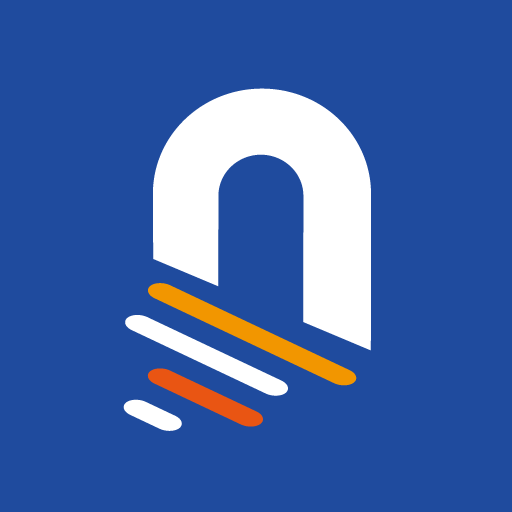Public blockchains are an important part of the blockchain industry infrastructure. After several years of rapid growth, there are currently hundreds of public blockchains worldwide. The industry has now entered into a period of rising competition among these blockchains. Looking back on 2019, how did the sector perform? Which projects continued to diligently develop and push forward? Which had the most influence on social media? Which had the highest transaction volumes? Which blockchain has the most diverse and most stable dApp ecosystem?
In this report, PAData analyzes 35 blockchains selected from CoinMarketCap's “Top 100 Cryptocurrencies by Market Capitalization.” We have divided these 35 blockchains into two main categories: large cap blockchains are those that ranked in the top 20 and mid cap blockchains are those that ranked 21-100. PAData gathered data from GitHub, on-chain data, and social media websites to come up with a collection of 2019 top blockchain rankings.
Which had the Highest Level of Blockchain Development Activity?
Bitcoin Tops the Group and Several Mid Cap Blockchains were Very Active
The best way to measure the performance of a blockchain project is to see how actively developers are contributing to its code. Of the 35 projects selected, 32 all have open source code on GitHub [1]. PAData analyzed the total number of stars, total number of forks, and total commits of each project on GitHub to determine their level of development activity.
The number of stars a project has represents the number of people who have followed the project. The more stars, the more popular the project is among developers. As of December 27, Bitcoin had over 40 thousand stars, far more than any other project.

Aside from Bitcoin, Ethereum, and EOS, no other projects exceeded 5 thousand stars. The project with the least number of stars was TomoChain with only 27. Of all the Chinese blockchains, NEO had the most stars with 2,928. In terms of mid cap projects, developers have taken the most notice to Nano.
The number of times a project has been forked represents the amount of people who have built on and experimented with its code. Therefore, a blockchain's number of forks represents the number of developers who are interested in contributing to the project. Bitcoin, Ethereum, and EOS are the three blockchains with the highest number of forks, whereas no other projects have surpassed 1,000 forks. NEO has been forked 865 times, the most among all Chinese blockchains.

In terms of total code commits, TRON took first place. TRON averaged 11.45 commits per day with a total of 4,182. Bitcoin and EOS came in second and third place.
The data shows that contributors were very active in committing to mid-cap projects as well. Ranks 4-10 on our list were IOST, Aeternity, OmiseGO, Waves, Qtum, Bitcoin Diamond, and TomoChain respectively. Developers contributed over 1,100 commits to each of these projects. In fact, Aeternity holds the 2019 record for most commits in a single-day with 234.

On the other hand, projects that have been around longer such as NEM, Dogecoin, and DigiByte, didn't do so well this year in terms of code commits. Also, 3 of the 10 blockchains with the lowest number of code commits, Vechain, Ontology, and Bytom are Chinese projects. However, it should be pointed out that the number of code commits does not necessarily reflect the quality of the commits.
Of these 32 blockchain projects, nearly half had received upgrades on the day that we gathered the data. More impressive is that the Bitcoin blockchain had been viewed 3,505 times since its most recent upgrade. There were only 4 projects that went a long time, nearly a year, without receiving any upgrades. These projects were also viewed less than 100 times in that same amount of time.

PAData assigned each project with an overall blockchain development rating between 0 and 10. Ratings were calculated using each projects’ star count, fork count, number of code commits, and the frequency of commits over the past year. These four measurements accounted for 30%, 30%, 30%, and 10% of the calculation respectively.

Based on this rating, developers were most active on Bitcoin. Second and third place go to Ethereum and TRON. Waves, OmiseGo and IOST are the three mid cap projects with the most active developers. As a whole, Bitcoin is on its own level way ahead of the other projects. Ethereum, TRON, and EOS together form a second tier, and the rest of the projects have quite a bit of catch-up to do.
Which Blockchain is Most Influential on Social Media?
Large Cap Blockchains Have a Solid Following
Interestingly, TRON’s Reddit Followers are Far Fewer than its Twitter Followers
A blockchain's level of influence is not only determined by its level of development and its market cap, it is also determined by its influence on social media.
PAData recorded the amount of Twitter and Reddit followers of each project. If a project does not have an official account, PAData looked at the official account of its foundation. If a blockchain project has neither of the two, then PAData looked at the largest unofficial account created on behalf of the project.
Bitcoin has the most followers on Twitter with 997,740, a year-over-year increase of approximately 7.25%.

TRON, Litecoin, and Ethereum are also at the top of the list. In fact, Litecoin’s amount of Reddit followers is second only to Bitcoin’s. Interestingly and similar to last year’s report, TRON has far fewer Reddit followers than it does Twitter followers, a mere 71,700.
In fact, all of the Chinese blockchains in this report have a fairly small following on Reddit. This may be because Chinese projects focus mainly on Weibo and other local social media platforms. In fact, before his account was blocked, Justin Sun (founder of TRON) had a massive Weibo following.
PAData assigned each project with a social media influence rating between 0 and 10. A blockchain's amount of Twitter followers and Reddit followers account for 50% of the calculation respectively. The higher the rating, the more popular the blockchain is among social media. According to the data, as of December 17, Bitcoin has the most influence on social media followed by Ethereum, Litecoin, and TRON.

PAData also concluded that projects that have been around longer have a stronger social media following than their newer counterparts. This raises the question of whether or not efforts to promote blockchain technology over the past two years are proving effective.
Which Blockchains Had the Highest Level of Transaction Activity?
Ethereum Processed More Transactions Per Day than Bitcoin
For a blockchain to go online is one thing, but what really matters is whether or not people are actually using it. If a project’s native token is not even being circulated in the secondary market, how can anyone expect it to develop other uses?
BitInfoCharts, a cryptocurrency statistics website, provides transaction information regarding 8 of the blockchains in this report. The data shows that Bitcoin had a daily average of over 620,000 active addresses. However, due to the fact that Bitcoin’s UTXO model activates a new address when returning UTXO, actual daily activity may be less than the active addresses per day.

Ethereum’s average amount of transactions per day in 2019 was far greater than Bitcoin’s. Ethereum averaged approximately 667,000 transactions per day whereas Bitcoin averaged around 328,000.
However, Bitcoin's average transaction volume of nearly $32,700 was higher than the rest. Bitcoin Cash and Litecoin had the next highest average transaction volumes of approximately $24,800 and $10,900 respectively.
PAData assigned each blockchain with a transaction activity rating between 0 and 10. A blockchain's daily active addresses, daily transactions, and average transaction volume each accounted for 1/3 of the calculation. The higher the rating, the higher the blockchain's transaction activity. The data shows that Bitcoin had the highest level of transaction activity followed by Ethereum and Bitcoin Cash. The disparity among blockchains in terms of transaction activity is even greater than that of blockchain development and social media influence.

Which Blockchain has the Best DApp Ecosystem?
Ethereum and EOS DApp Landscapes Full and Diverse
TRON DApps had the Highest Number of Transactions
DApps are a crucial factor to any blockchain ecosystem. In fact, any public blockchain that caters to the consumer market has, or is currently developing, its own dApp ecosystem. Although many blockchains have dApps, very few have been able to develop them into a prospering dApp ecosystem.
Ethereum, EOS, and TRON are three blockchains currently recognized by the market as having a full and diverse variety of dApps. On December 27, PAData analyzed these three blockchains by looking at each of their top 100 dApps. Data was gathered on DAppTotal which ranks dApps according to active daily user numbers.
Ethereum and EOS both have 8 different types of dApps whereas TRON has 5. Most of Ethereum's top 100 dApps are game apps, decentralized exchanges, and finance apps (28, 24, and 13 respectively). EOS and TRONs’ dApps consist mostly of gambling apps (31 and 44 respectively).

Ethereum dApps had the most weekly active users averaging 162 (this refers to the number of user accounts that called dApp smart contracts from non-duplicate addresses and assumes that each address represents a single user). TRON had the second most weekly active users with 143.5.
TRON's average weekly number of transactions per dApp was 1,995, most on gambling and high-risk dApps which account for 3/4 of TRON's dApp landscape. Ethereum came in second with 1,250 transactions per week.
Combining this data with that of PAData’s report back in August, it is clear that Ethereum's dApp landscape is well established and consistent. EOS and TRON on the other hand seem to be less so. For example, TRON dApps had an average of 222.5 weekly active users back in August, however, in this report TRON dApps had only 54.5. From this perspective, not only is Ethereum’s dApp ecosystem more full and diversified, it is also more stable.
Appendix:
[1] Tezos has open source code on a different platform, therefore, Tezos data is not included in the first section of this report; no open source repositories with any substantial data were found for Ethereum Classic and Bitcoin Gold on GitHub, therefore, data they are not included in the first section of this report.








